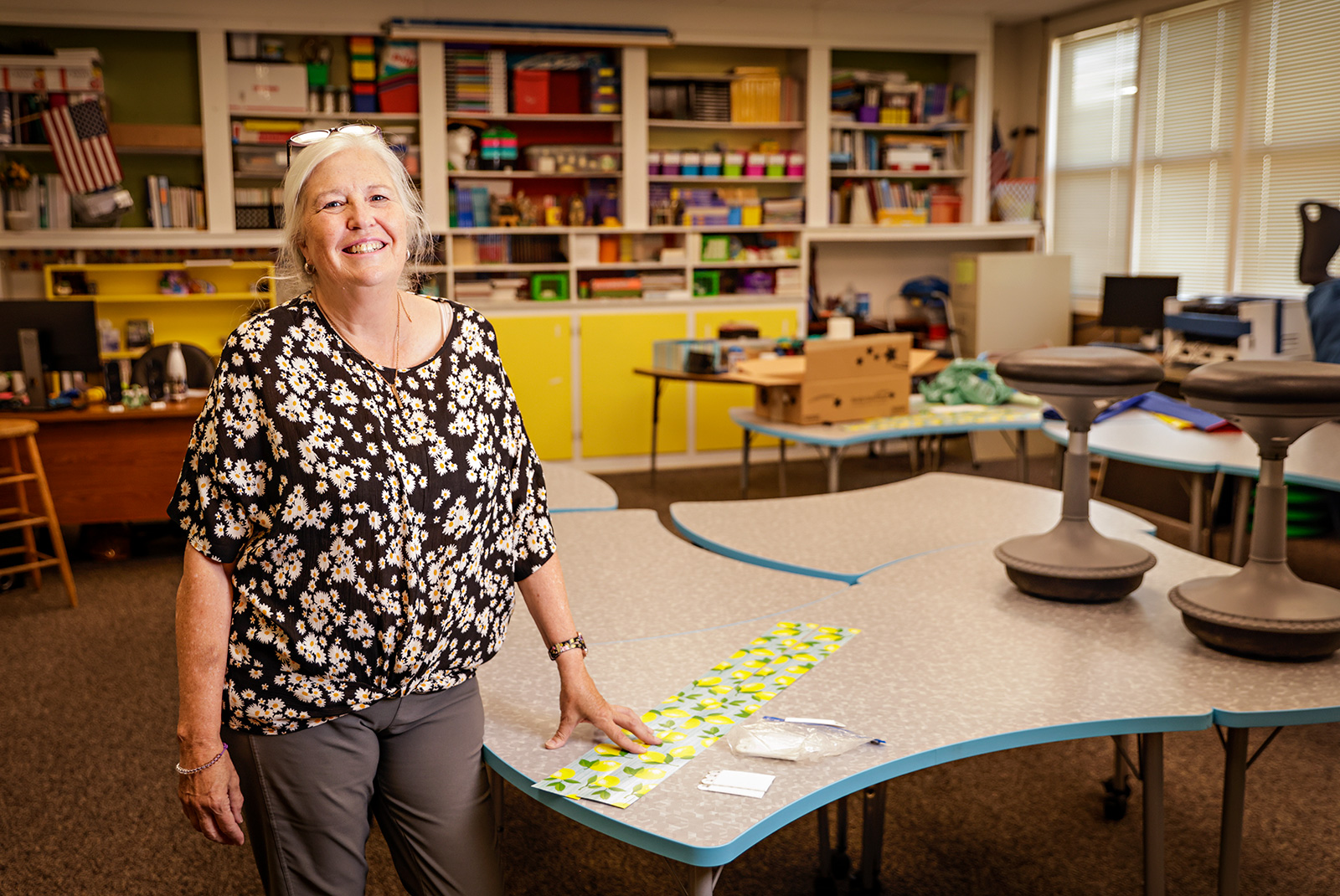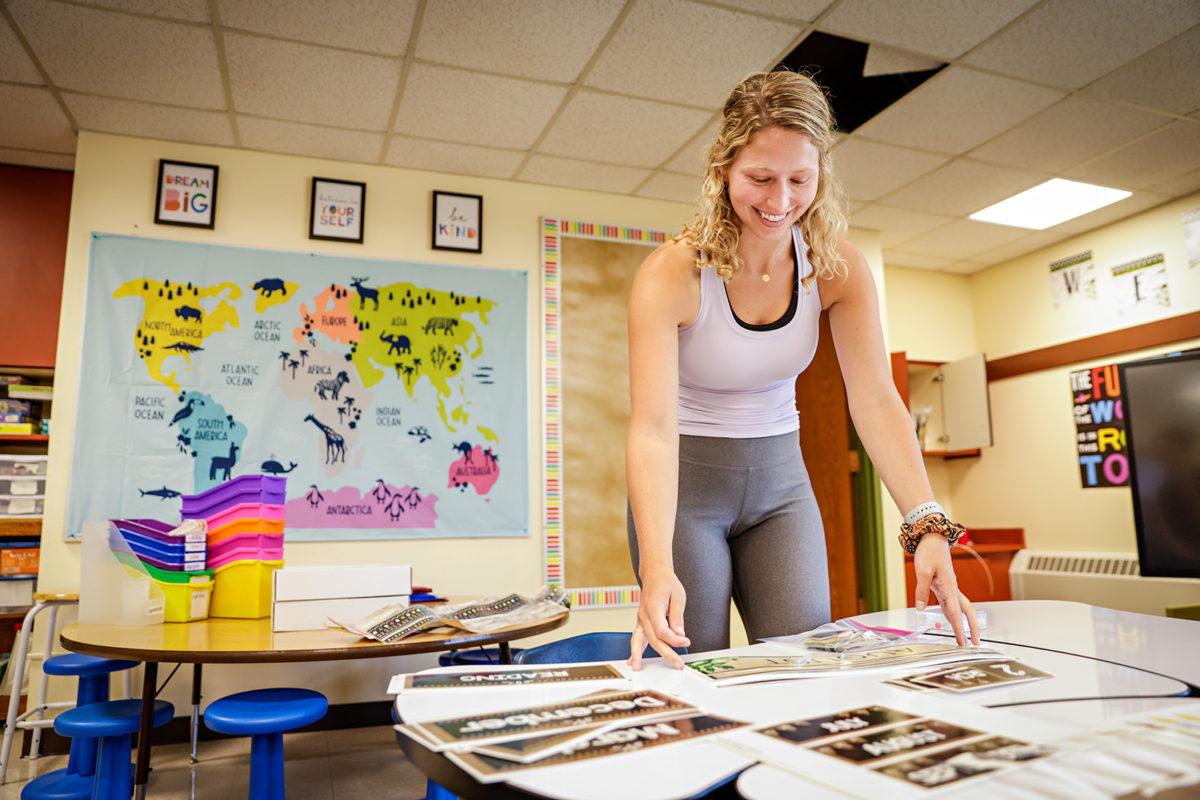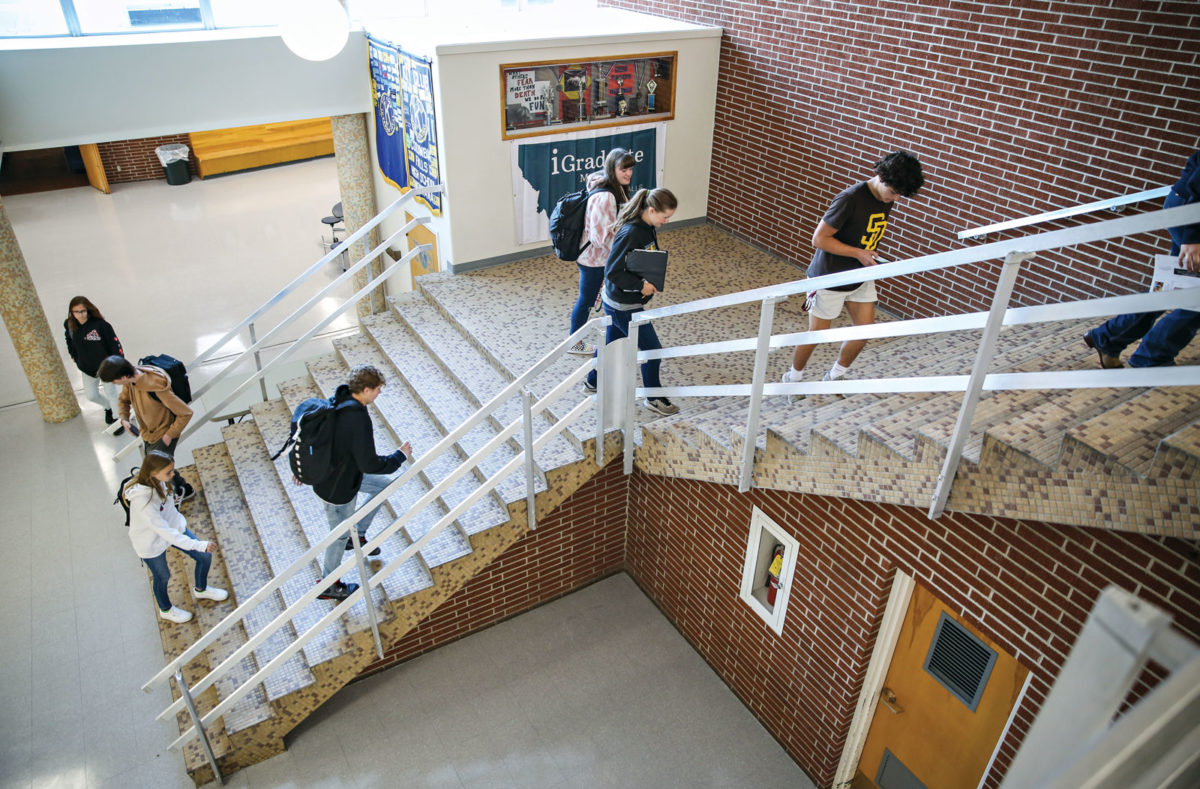‘A Fresh Start’
Flathead Valley school districts have followed national trends of staff shortages, high teacher turnover and burnout throughout the pandemic, but the educators who weathered the storm are looking forward to a more normal school year
By Maggie Dresser
After teaching in South Bend, Indiana during the height of the pandemic, where students struggled to engage in online learning and teachers and kids were constantly out of the classroom sick with COVID, Kate McHugh’s second graders fell further and further behind while she and her colleagues struggled with burnout.
“It was so hard to connect with the kids,” McHugh said. “It was really hard for them to engage – their parents were trying to work, and they didn’t have anyone to watch them … They regressed for sure, and it made it hard once they came back to in-person learning. They were very far behind.”
Support at her school district was minimal, McHugh said, but administrators were doing the best they could considering the chronic staffing shortage, and teachers were constantly filling in for each other and taking on more work, resulting in high turnover.
McHugh thought about changing her profession at times due to the stress, but she says she could never do it.
“I felt burned out, but I always knew that I would push through, and I needed to for my students because I just couldn’t leave them,” she said. “We were in it together and the students needed me.”
McHugh had only planned on teaching in South Bend for a couple of years while her husband attended graduate school, and they recently moved to the Flathead Valley. She is starting her first year as a second-grade teacher at East Elementary in the Evergreen School District.
Now that McHugh is back teaching in-person fulltime for the foreseeable future, she’s relieved and ready to build connections with students once again.
“We’re excited for a fresh start,” McHugh said.

Nationwide, more than one in five public schools reported at least 5% of their teaching positions were vacant in January of 2021, with new data from June revealing that 88% of public schools reported that teacher and staff burnout was a concern last year, according to the Institute of Education Sciences.
On average, public-school administrators expected to fill three positions for the 2022-2023 school year and approximately 51% of schools reported that turnover was due to resignations while 21% was due to retirement.
At Kalispell Public Schools (KPS), Superintendent Micah Hill said the district hired 50 new K-12 teaching staff for the upcoming school year, plus more than 30 additional staff for classified positions like bus drivers and food service employees.
Of the 50 teaching positions, Hill said around 38 of those were retirements while the rest were resignations.
“The year prior we didn’t have as many retirements as we typically would,” Hill said. “We had a lot of teachers that didn’t want to end their career after a crazy COVID year.”
Last year, KPS did not enforce a mask mandate and kept schools open, which Hill says helped retain a less hostile environment as school boards across the nation remained divided on mask mandates and other COVID protocols. But KPS was not immune to education and staffing challenges during the pandemic.
Teachers, like many of their students, were constantly out of the classroom after testing positive for COVID, and Hill says there was a high demand for substitute teachers, which were in short supply.
Ideally, Hill would like to have a pool of 150 substitutes to draw from when a teacher is out, but he says the district realistically has 60 to 70. When a substitute is unavailable to cover a classroom, another teacher takes over and classrooms are sometimes combined.
“It fell back to the teachers and the paras to cover when people were out,” Hill said. “That continues to be a challenge for us. If a teacher has five periods in a day and then they are asked to cover for somebody, it’s adding on to their workday.”
At Evergreen School District, superintendent Laurie Barron described similar feelings of frustration about the lack of substitutes, which strains the regular staff.
“Staff and students were either sick or had COVID or were isolating that caused them to be in and out a lot,” Barron said. “They were forced to be home even when they were healthy and the in-and-out was extremely demanding and stressful.”
At Evergreen, the district hired 17 new teachers this year to reach full staff, but support staff is still short.
Barron said teachers resigned for a variety of reasons with some relocating while others left the teaching profession.
After working as a special education teacher at Whitefish School District for nine years, Christian Bitterauf left his position at the end of the 2021-2022 school year.
“A lot of it was the increased demand, especially for my field,” Bitterauf said. “My caseload grew 30% during the pandemic and we just couldn’t fill para positions and behavioral specialists. I was really stressed out.”
Bitterauf said most of those positions remained unfilled last year, adding more to his caseload, which already entails working with students who have high needs. He describes last year’s caseload as “diverse,” with students who were on the spectrum, had down syndrome and another who had a hemispherectomy, a procedure that involves removing half of the brain.
“It was super intense,” Bitterauf said. “I loved the kids – I had a great relationship with them. It had nothing to do with them and it had everything to do with being understaffed and not being able to do what I needed to.”
Filling support staff positions was nearly impossible, Bitterauf said, and the few people who applied were not qualified.
“Ultimately, it was for my mental health, and it was in my best interest to transition to something else,” Bitterauf said. “I know those challenges will continue to impact kids who have more intense needs.”

Student enrollment has been steadily growing over the past several years, and KPS is seeing a noticeable increase this year.
Last school year, KPS had 6,162 students enrolled. As of last week, there were 6,294 enrollments, a number that will grow until school starts later this month. In mid-August, there were 17 enrollments in one day, Hill said.
At Glacier High School, there were 1,425 student enrollments during the 2021-2022 school year compared to 1,324 the year before, according to Montana Office of Public Instruction data. In the 2014-2015 school year, there were 1,294 students.
Hill says the growth is most obvious in elementary schools, some of which are in neighborhoods experiencing significant development.
“It’s something that’s really hard to gauge or manage because we have neighborhood schools and you get these unknown bubbles where people have moved in,” Hill said. “Now we have to bus kids who live right next door to a school to a different site. We are seeing some of those challenges this year and we already reassigned one teacher to another building than they were hired for. It doesn’t always sit well with the teachers and our No. 1 priority is to keep kids in their neighborhood school, but we can’t always do that.”
To address growth, Hill plans to ask the school board to initiate a long-range facility plan that will focus on birth rate, population growth and Kalispell’s city development data. The study will also analyze operational capacities and will determine whether the district needs entirely new facilities or additions to existing schools.
This May, voters rejected a $1.5 million high school levy that would have funded academic programs, technology, curriculum, salaries and general operations for the Kalispell high school district.
Hill said this is not uncommon for high school levies to fail, but elementary school bonds and levies have been successful in the past.
With 90% of the district’s budget going toward salaries and benefits, the elementary school is sitting at 99% of its maximum budget while the high school is at 91%.
If the high school levy had passed, it could have helped the teacher’s union negotiate a higher salary, which starts teachers at about $37,000, up 2% from last year.

“Employee salaries are not keeping pace with the inflationary increases in cost of living,” Hill said. “When you work in the public sector with taxpayer funding, it’s hard.”
At Evergreen Crossroads Program, a specialized education program within Evergreen School District, fifth and sixth grade special education teacher Linda Bowman says that while teaching throughout the pandemic has been challenging, it’s made her more efficient after 28 years in the district.
“Moving to online learning was a challenge, but now it’s a gift,” Bowman said.
Bowman teaches half of her classes online now, allowing her students to learn remotely if they can’t come into school.
“We can reach out to more people and there are small benefits of COVID,” Bowman said. “It offers a lot of flexibility and when you have kids that get sick, you still teach.”
Bowman said her students adapted well to technology, which made them more independent instead of always relying on paraprofessionals for help. For example, online textbooks can be read to the students instead of having a teacher reading aloud. Despite the technology, she says relationships are still built.
Principal Melissa Hardman says Crossroads offers a unique teaching environment because they already have a small staff to teach about 50 students. All of her staff from last year returned this year, and she said everyone supported each other during the pandemic.
“I really think it just gave us an opportunity to rethink how education was and all the teachers became very inventive and creative and really took on those challenges,” Hardman said. “I don’t think it hindered us – it gave us a new outlook.”